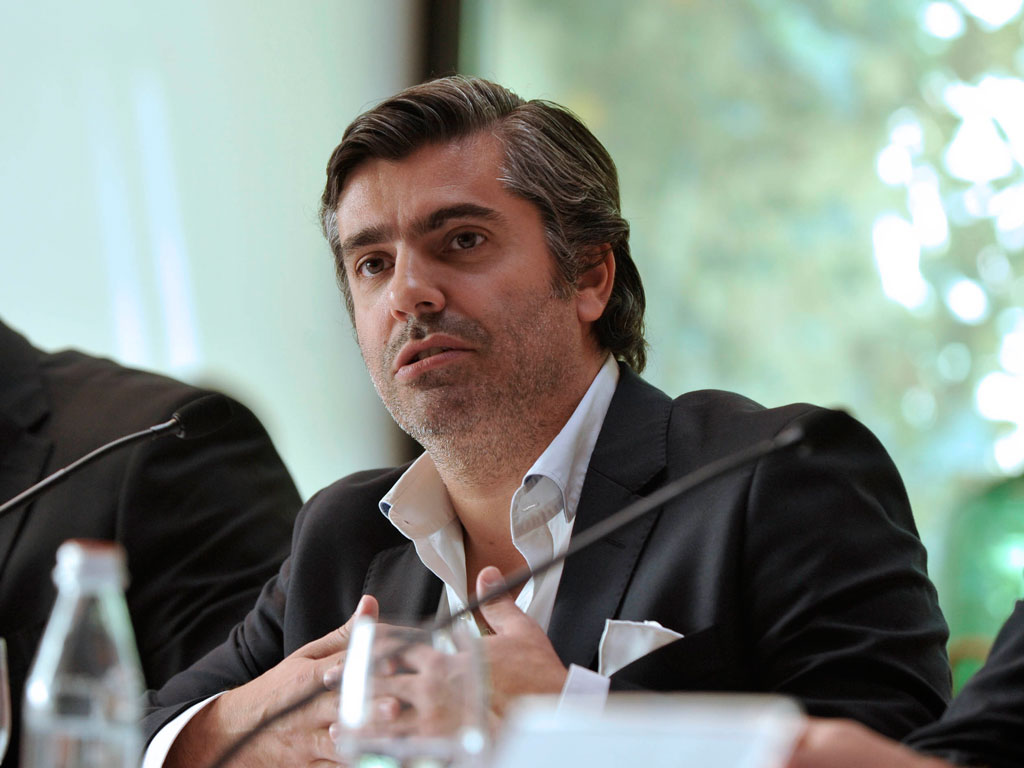Luis Silva Dias, head of creative department for European market at FCB International - Creativity solves all problems
 Friday, 27.06.2014.
Friday, 27.06.2014.
 12:14
12:14

Belgrade-based FCB Afirma, a member of one of the largest networks of advertising agencies - Foot, Cone, Belding, has recently unveiled its new image. To honor the AF(F)IRMAtion of creativity, this agency organized a series of campaigns in June with the aim of encouraging creative thinking among our fellow citizens of various ages.
On that occasion, Luis Silva Dias, the head of the creative department for the EU market at FCB International and the lead author of FCB rebranding, was staying in Belgrade in March 2014. He joined the FCB network in 2000 and thanks to his creativity, he quickly made a progress. By the way, Luis Silva Dias was a partner in the establishment of the creative studio Protein in Lisbon in 1990 and he used to be a designer for the respectable Portuguese daily newspaper Diario de Noticias. Also, Silva Dias has partaken in the creation of over 70 brands.
As the key member of the FCB Global Creative Council, Luis Silva Dias has a rare combination of creative and business skills. He is the laureate of almost all creativity awards from the most renowned festivals: D&AD, The One Show, CLIO, Cresta, Art Directors Club, LIA, Cannes Lions.
eKapija: You came to Belgrade for two reasons – one is the presentation of your new logo, and the other a desire to inspire youthful creativity. What was the basis for the creation of a new visual identity for the company “Foot Cone, Belding”?
- The new corporate identity is the visual expression of the new cycle we've been working on since Carter Murray became CEO of FCB. As we're realigning our focus and our ambition for the years to come we needed a brand that would reflect our beliefs, our character, what we stand for and, ultimately, our purpose. On a first stage, over a hundred people worked hard to have full clarity and tangibility in the new positioning. All of our (over 150) operations were committed to it, all contributed and all had a voice.
And the main conclusion that this process achieved was the recognition that our main strength lies in being the most 'local' of the networks. Our industry has been going over a period of absolute consolidation. Campaigns are now developed to be 'global', to be used indistinctively in every market. Brands tend to become generic in the stories they tell and the target is called to use references that don't reflect their real lives. Being truly local gives us an edge and an advantage beyond the obvious deeper knowledge and social fluency - we can listen from close and have the conversation about real lives, about specific references, about real people. More, we aim to celebrate the local culture, use the local context to build a sense of belonging to our brands, our clients and the consumer. Advertising is also part of culture building and I believe it should recognize, respect and add to the local culture.

So, this identity that came as a consequence of who we are, a symbol of that joint voice of the FCB family, is now being brilliantly translated by FCB Afirma to the Serbian context, in search of true relevance for the society in which we operate.
eKapija: You have received many awards in the field of design. Could you please take us through your creative process, and where you believe attention to details is most important? How effective are logos for communicating a message?
- A logo, although being the most visual side of a brand, is just one element within the full identity system that the brand needs to function properly. It's an important one as it will become the focal point for the consumer, and it's the element that will encapsulate all the meanings, all the values of that brand, hopefully offering consumers a chance to express themselves through it.
The good logos are those who can carry the story of a brand. The really good ones offer the consumer the opportunity to become the character of that story. Its meaning goes beyond a company, or a product or a service, it becomes an intricate part of people's lives. That is the value of a brand.
As a designer, I spend most of my time distilling the truth within the brand, the relevance it can bring to consumers lives and what elements of the brand story I can use to ensure that the brand expression is also a conversation with the consumer.
eKapija: As of March this year, your logo is comprised of a wide range of colors representing all the local agencies comprising the FCB network of marketing agencies. What do these colors symbolize?
- The intention behind that color palette was precisely to represent the colors of the flags of all the countries we have a presence. The way we did it, allowed us to build a vibrant, positive and energetic branding element for our corporate identity that goes beyond the logo and allows us to express the local flair within a common, FCB language.
eKapija: How important is it to develop creativity at an early developmental stage and in what ways should creativity in children be encouraged?
- I believe that creativity can solve all problems. Good will is essential, the means are crucial, but throwing money at a problem is not necessarily a guaranty of solution and hell is full of good intentions. We need creativity to achieve, not only a solution, but the best solution. Also, it's with creativity that we build valuable 'change', it's with creativity that we build 'new' and it should be with creativity that we look at our future. It's coming from this profound belief that FCB Afirma is so engaged in doing its part in the building of such a (creative) future for Serbia, by pushing and supporting a more creative learning process for the new generations as we're doing with preschool institutions "Kids Days" and Home for children without parental care "Drinka Pavlovic".

eKapija: One gets the impression that that communication has become somewhat unified in this time of globalization. Does this trend stifle creativity or does it ease the emergence of fresh, creative ideas to the surface?
- I would say that it offers a huge opportunity to all the brands that can navigate beyond that fact and have a more relevant and significant local voice leading to true relevance and attention from the consumers. Creativity is a tool that reaches it's best result if it is used to tell truthful, tangible stories. And a local culture offers the ability to make that story real and valid to people's lives. If I can identify myself with something, I will be part of that something and I will give it my full attention.
eKapija: How does one become a creative director?
- By getting up very early in the morning, working hard and listening to people.
eKapija: The FCB network numbers 150 agencies worldwide. How does the workspace inspire creativity in the designer?
- I think it helps to be creative if you work in a context that expresses creativity. Not only for our people but also to our clients, visitors, etc. Also, we're not layers, we're not bank clerks. We are about different, talented, creative minds, people who are constantly thinking about things that don't exist yet - as that is the nature of creativity - so building a matching work space will allow for the free flow of inspiration.
Irina Milosevic
Most Important News
06.04.2024. | Agriculture
Preconditions for Placement of Fresh Blueberries and Dried Plums in Chinese Market Secured

16.04.2024. | News
Jovan Ciric, Leasing Director Retail MPC Properties – MPC Echo symbolizes our desire for good ideas and innovative endeavors to spread freely and bring about positive changes

16.04.2024. | News
10.04.2024. | Finance, IT, Telecommunications, Tourism, Sports, Culture
Creative Industry – What This Serbian Economy Sector Worth EUR 2 Billion Encompasses

10.04.2024. | Finance, IT, Telecommunications, Tourism, Sports, Culture
23.04.2024. | Construction, Transport
Tender for first section of Belgrade-Nis fast railroad from Velika Plana to Paracin announced

23.04.2024. | Construction, Transport
16.04.2024. | News
Economy Fair in Mostar opens – 26 companies from Serbia exhibiting

16.04.2024. | News
22.04.2024. | Industry, Transport
Serbia to develop project of “flying taxis” for EXPO with Airbus – Signing of memorandum announced

22.04.2024. | Industry, Transport


 Izdanje Srbija
Izdanje Srbija Serbische Ausgabe
Serbische Ausgabe Izdanje BiH
Izdanje BiH Izdanje Crna Gora
Izdanje Crna Gora


 News
News








